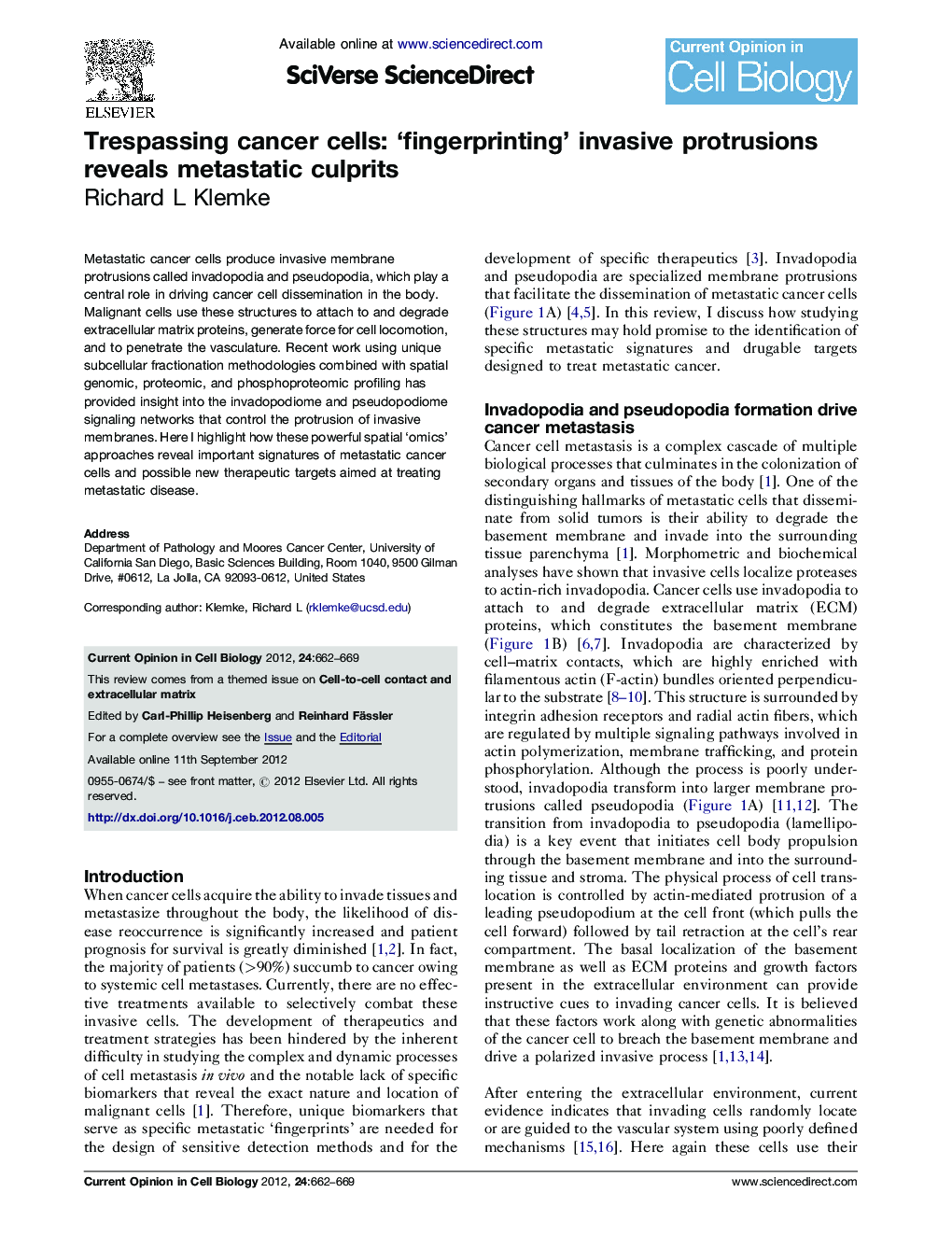| Article ID | Journal | Published Year | Pages | File Type |
|---|---|---|---|---|
| 10929191 | Current Opinion in Cell Biology | 2012 | 8 Pages |
Abstract
Metastatic cancer cells produce invasive membrane protrusions called invadopodia and pseudopodia, which play a central role in driving cancer cell dissemination in the body. Malignant cells use these structures to attach to and degrade extracellular matrix proteins, generate force for cell locomotion, and to penetrate the vasculature. Recent work using unique subcellular fractionation methodologies combined with spatial genomic, proteomic, and phosphoproteomic profiling has provided insight into the invadopodiome and pseudopodiome signaling networks that control the protrusion of invasive membranes. Here I highlight how these powerful spatial 'omics' approaches reveal important signatures of metastatic cancer cells and possible new therapeutic targets aimed at treating metastatic disease.
Related Topics
Life Sciences
Biochemistry, Genetics and Molecular Biology
Cell Biology
Authors
Richard L Klemke,
